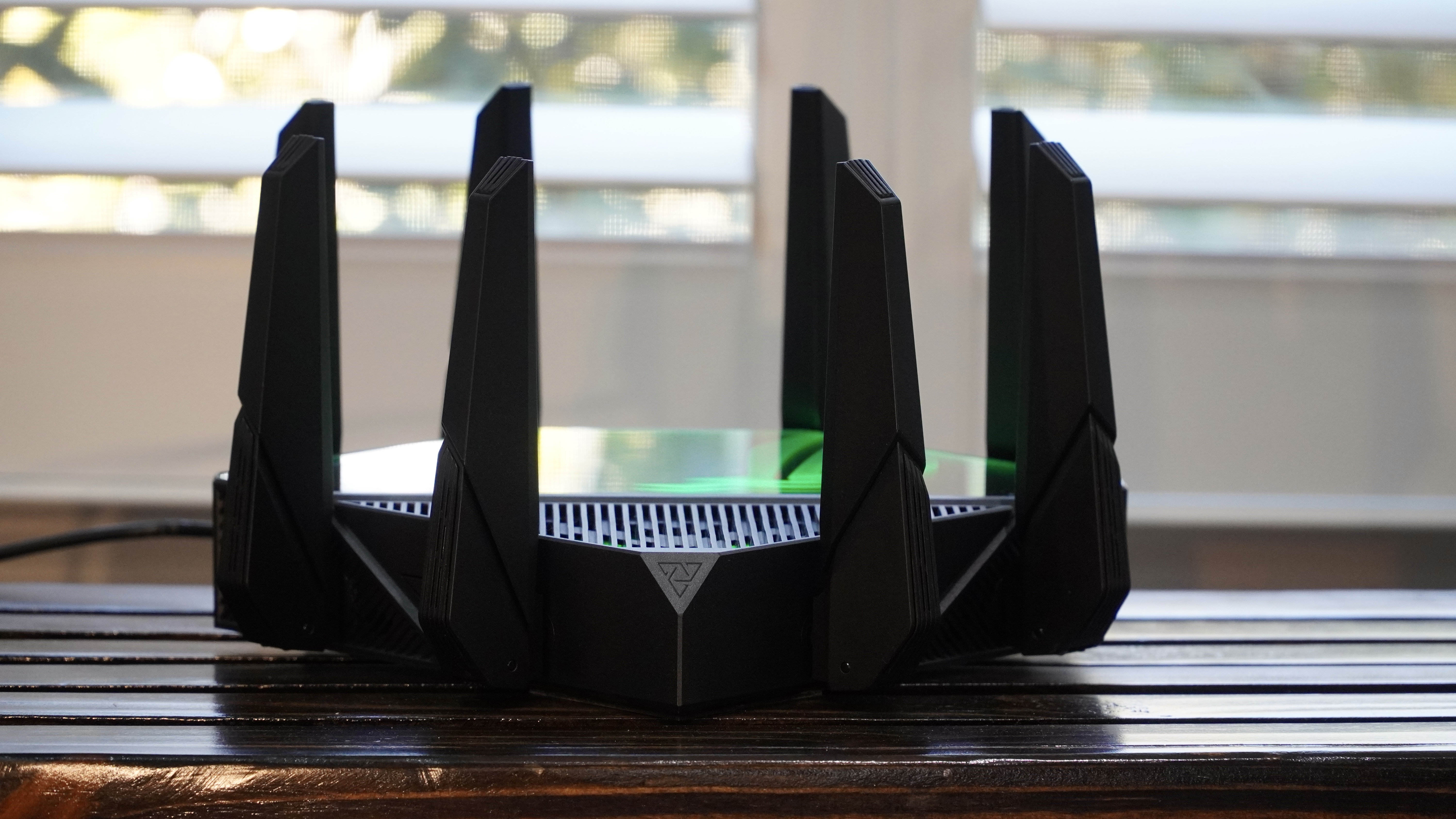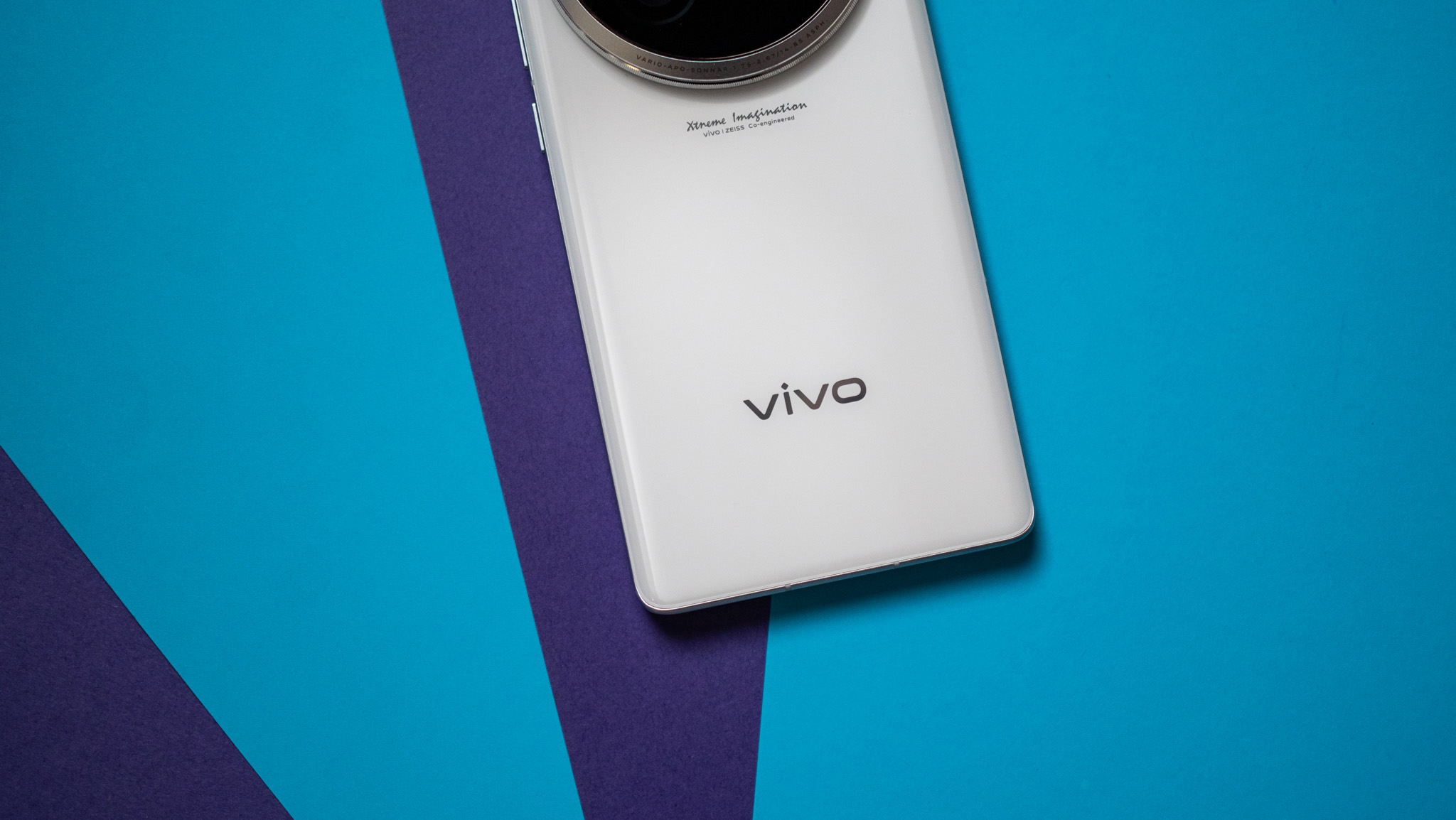Android Central Verdict
The ASUS ROG Rapture GT-AXE16000 is one of only a few quad-band Wi-Fi 6E routers and with its dual 10GbE ports, it may be one of the most capable routers money can buy. Alongside some of the fastest wireless hardware available, ASUS has packed this router full of software features like its AiProtection QoS, Game Accelerator, and parental controls.
Pros
- +
Extremely fast
- +
Solid coverage
- +
Dual 10GbE ports
- +
ASUS AiProtection
- +
AiMesh included
- +
Advanced settings available
Cons
- -
Very large
- -
The design will collect dust
- -
Quite expensive
Why you can trust Android Central
Whether you’re buying the latest RTX 4090 GPU, a maxed-out Mac Studio, or even a Galaxy S22 Ultra, you’re going to see some diminishing returns on the money you spend. While these products are measurably superior to their cheaper alternatives, you have to wonder when you’ll be able to use the full power of these devices. For the most part, we just want to make sure we have plenty of headroom to eliminate, without a shadow of a doubt, any room for a slowdown. That is, we don’t want to spend a second waiting on tech to catch up.
The ASUS ROG Rapture GT-AXE16000 feels like it exists to be the fastest gaming router money can buy and for the most part, it is. There’s nothing wrong with being the fastest, but this halo product simply doesn’t make sense for most people. Even a large family will struggle to saturate this router with several 4K streams, downloads, and browsing. You need to be the sort of person that already has terabytes of data on your NAS, and it needs to be something more substantial than some anime MKVs to justify a 10Gb Ethernet port. That being said, the ROG Rapture GT-AXE16000 is without a doubt, one of the fastest and most capable routers I’ve ever had the pleasure to use.
ROG Rapture GT-AXE16000 review: Price and Availability
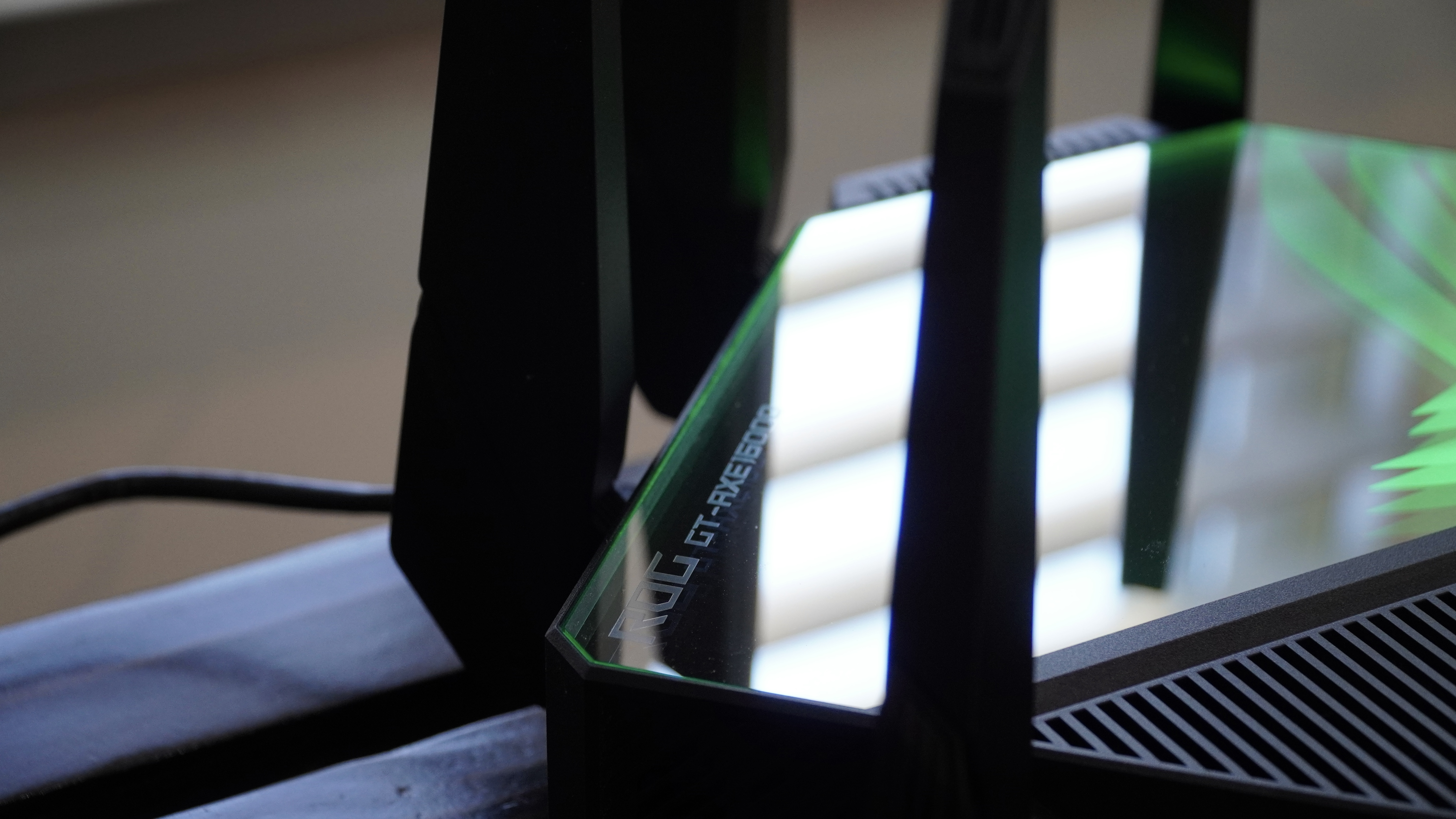
The ROG Rapture GT-AXE16000 is a massive $700 to buy and has been available since early summer 2022. Even so, it’s price competitive with other quad-band Wi-Fi 6E solutions and when you consider it has dual-10GbE ports, it’s a solid value. This router is available in the U.S. from retailers like Amazon, Newegg, B&H, and Micro Center.
The router was packed primarily in cardboard though ASUS used plenty of foam to hold the router secure. Each of the eight antennas also had a sleeve of single-use plastic out of the box. This is more landfill than I like to see in my packaging and I would like to see ASUS follow the lead of some brands like eero that have started using more recyclable packaging. However, environmental concerns don’t impact the performance of the router and will not be considered for the final review score.
ROG Rapture GT-AXE16000 review: What I like
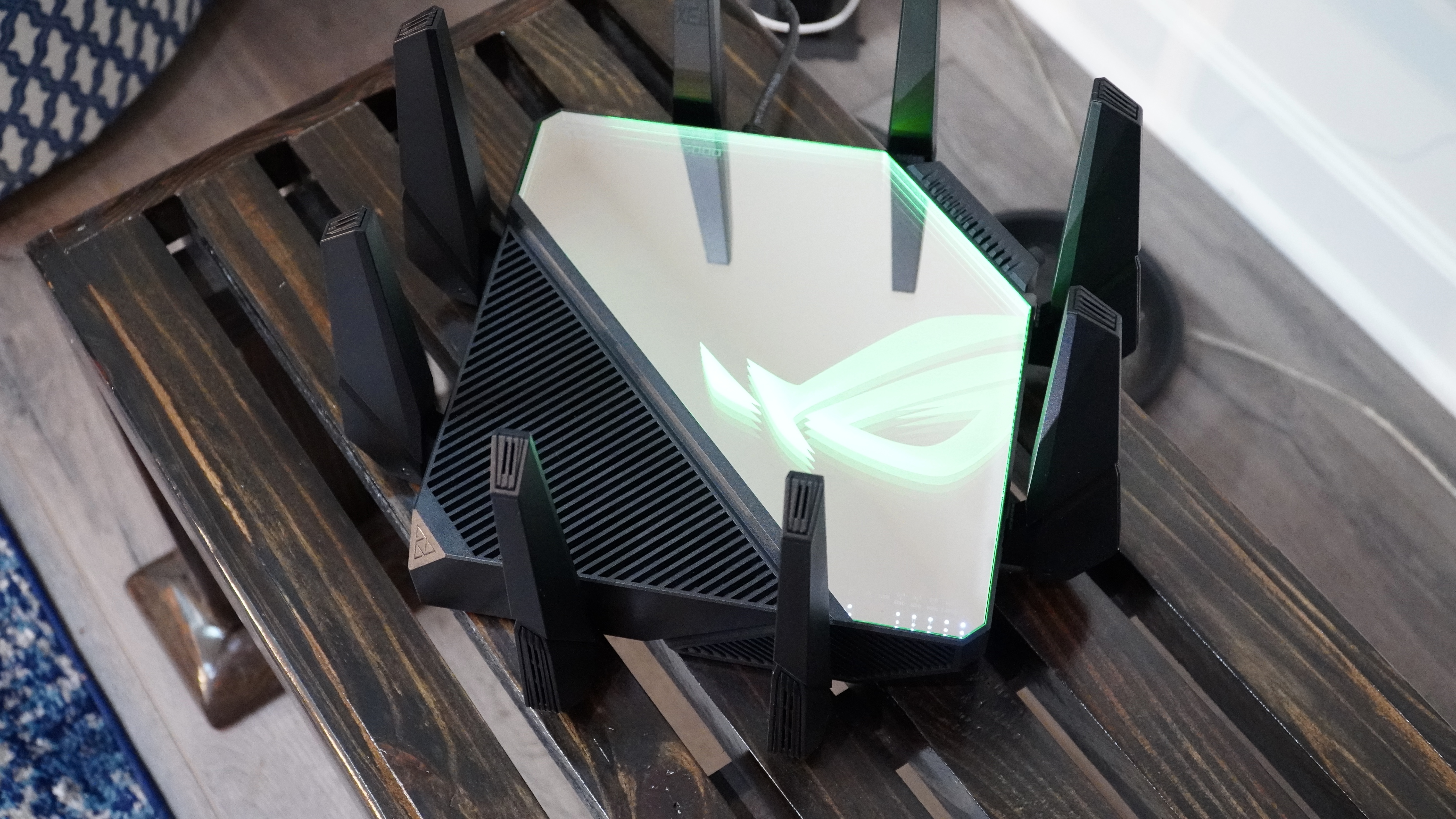
There is so much about this router to love once you’ve finally gotten over the sticker shock and cracked open the box. Half of the top of the router is dedicated to venting while the other half is an RGB-lit mirrored surface with the ROG logo in it. Compared to other ROG LED light shows, this is definitely one of the flashiest though it quickly grew on me and helped to remind me of the pure power under the surface of this router.
That power starts with two 10Gbps Ethernet (GbE) ports in addition to the 2.5GbE WAN port, and four gigabit ports. It has a quad-band Wi-Fi 6E wireless setup with a single 2.4GHz band at 1148Mbps, two 5GHz bands at 4804Mbps each, and a 6GHz band at 4804Mbps. To keep it simple, this router is set up to handle more traffic than the vast majority of households can throw at it and can easily handle multiple streaming connections at once.
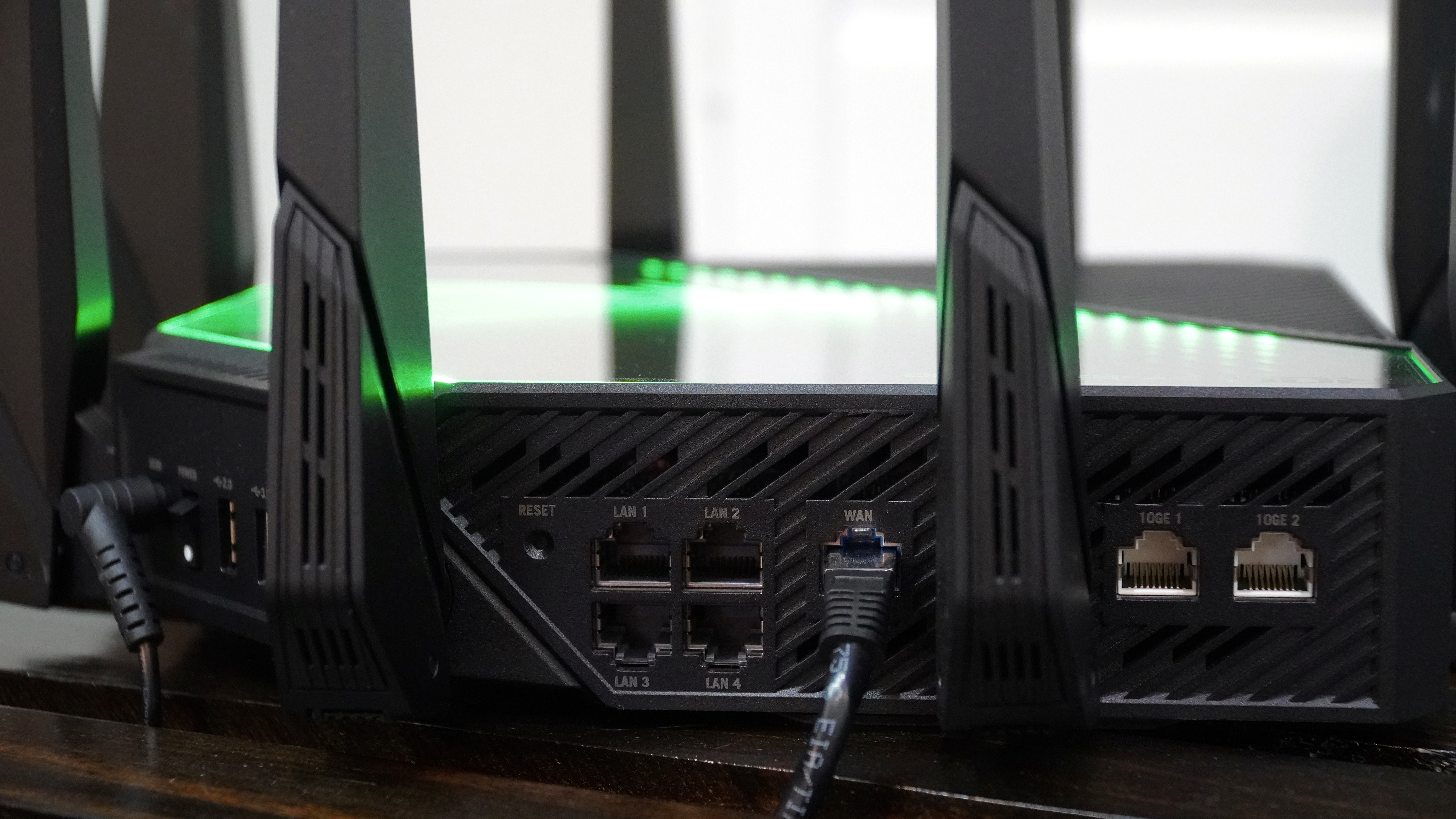
Coverage throughout the house was generally strong with plenty of speed indoors and a 2.4GHz signal outdoors for any smart home tech you may have outside. Sticking with indoor tests, however, I was more than satisfied with my speeds and never had any reason to complain about reliability.
To understand the day-to-day performance, I performed several internet speed tests in different parts of the house. I tested the ROG Rapture GT-AXE16000 on my fiber home internet connection from a local provider. My average speeds tend to land in the upper 800Mbps range with upload speeds around 600Mbps during the day. For context, a 4K video stream will use well under 50Mbps.
| Header Cell - Column 0 | Living Room (router) | Bedroom | Garage |
|---|---|---|---|
| Zenfone 8 (Wi-Fi 6E 160MHz) | 155/202Mbps, 122/206Mbps | 152/93.1Mbps, 138/160Mbps | 103/152Mbps, 87.3/149Mbps |
| Galaxy S20+ (Wi-Fi 6) | 112/62.6Mbps, 97.8/61.8Mbps | 88.5/69.3Mbps, 97.1/55.9Mbps | 100/75.9Mbps, 88.3/66.3Mbps |
| LG G8 (Wi-Fi 5) | 115/111Mbps, 118/109Mbps | 109/53Mbps, 92.1/73.1Mbps | 98.1/86.3Mbps, 95.6/56.6 |
Speeds on 2.4GHz won’t get much faster than this on any router and are more than quick enough for the smart home devices and outdoor music streaming we usually use this lower frequency for. Most of our daily traffic will be on one of the 5GHz bands.
| Header Cell - Column 0 | Living Room (router) | Bedroom | Garage |
|---|---|---|---|
| Zenfone 8 (Wi-Fi 6E 160MHz) | 882/485Mbps, 916/509Mbps | 742/426Mbps, 764/460Mbps | 860/249Mbps, 866/617Mbps |
| Galaxy S20+ (Wi-Fi 6) | 383/378Mbps, 482/513Mbps | 449/235Mbps, 473/236Mbps | 500/311Mbps, 496/324Mbps |
| LG G8 (Wi-Fi 5) | 584/558Mbps, 601/581Mbps | 459/252Mbps, 462/248Mbps | 528/281Mbps, 512/281Mbps |
| Header Cell - Column 0 | Living Room (router) | Bedroom | Garage |
|---|---|---|---|
| Zenfone 8 (Wi-Fi 6E 160MHz) | 900/663Mbps, 910/527Mbps | 592/372Mbps, 595/343Mbps | 767/690Mbps, 849/584Mbps |
| Galaxy S20+ (Wi-Fi 6) | 813/650Mbps, 794/670Mbps | 564/290Mbps, 552/231Mbps | 734/482Mbps, 753/474Mbps |
| LG G8 (Wi-Fi 5) | 600/627Mbps, 616/635Mbps | 327/216Mbps, 306/238Mbps | 503/454Mbps, 553/441Mbps |
Both of these bands performed admirably with similar speeds on most devices. The extra speed on the Zenfone 8 is thanks to the Wi-Fi chip which not only can access 6Ghz Wi-Fi but can connect to 160Mhz 5GHz Wi-Fi. This essentially doubles the link speed of the connection compared to the Galaxy S20+ allowing the phone to stick much closer to my full internet connection speed. I was a bit surprised to see how well the Wi-Fi 5 LG G8 kept up but it’s likely due to the lack of wireless congestion at my home.
The 6GHz speeds should be close to 5GHz in my fairly uncongested neighborhood and they were.
| Header Cell - Column 0 | Living Room (router) | Bedroom | Garage |
|---|---|---|---|
| Zenfone 8 (Wi-Fi 6E) | 914/626Mbps, 905/654Mbps | 234/47.9Mbps, 241/49.4Mbps | 866/314Mbps, 872/326Mbps |
One thing to remember about 6GHz Wi-Fi is that it must run at a lower power level than 5GHz. That means that signal starts to fall off much more quickly as you move away from the router. This Wi-Fi signal will do much worse passing through walls as shown by the much lower speeds in the bedroom testing location.
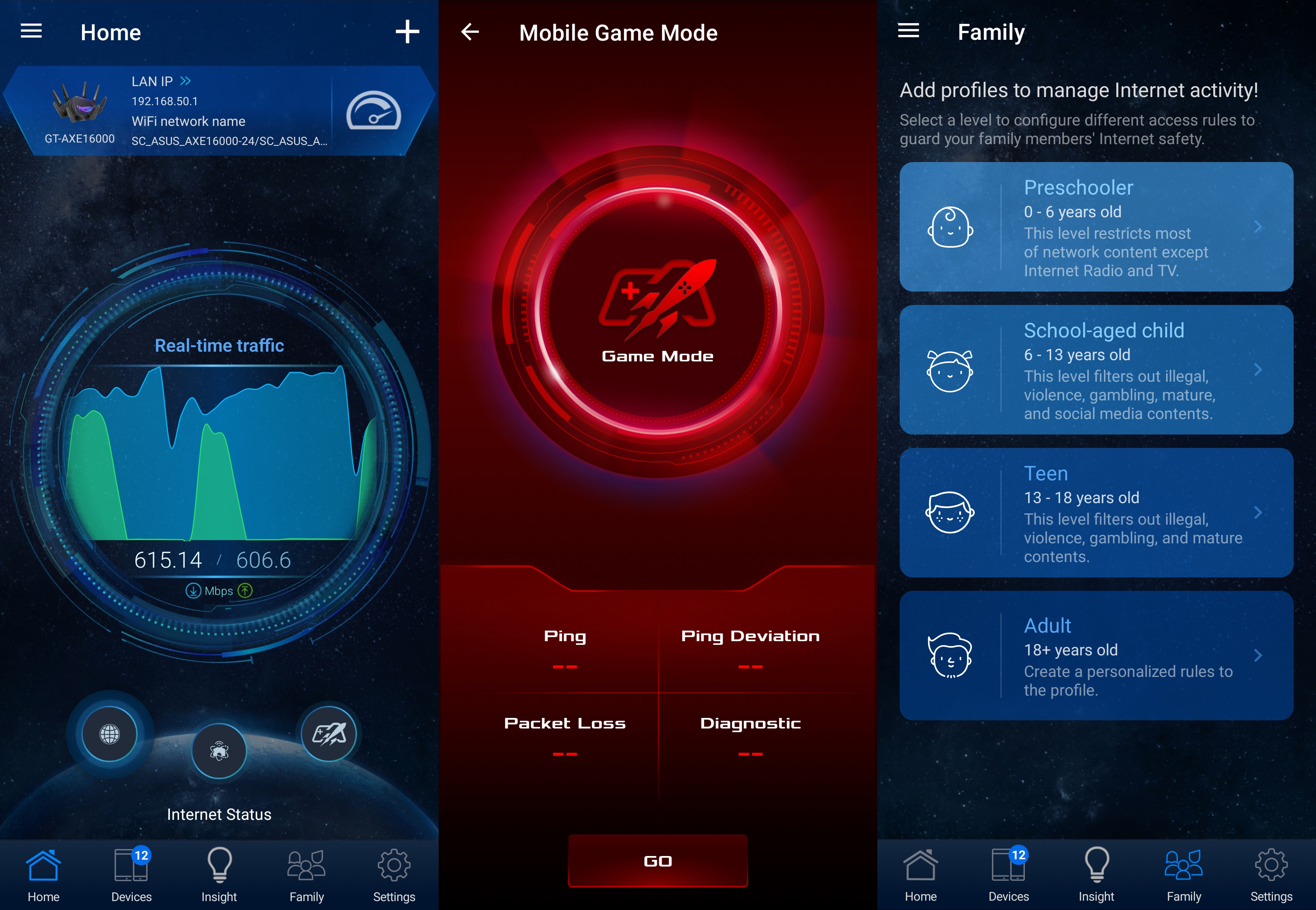
Software is another one of ASUS’ strengths with easy setup in the ASUS Router app or in a web browser. During the setup procedure, you’ll be asked if you want to enable Smart Connect. This feature combines all of the router’s Wi-Fi bands under a single name and lets the router choose the band that makes the most sense for your device. This is the setting most people should be using unless they want granular control over which devices are on which band. You can also configure it to make the 2.4GHz band separate which can be helpful with some of the dumber smart home devices that don’t support 5GHz Wi-Fi.
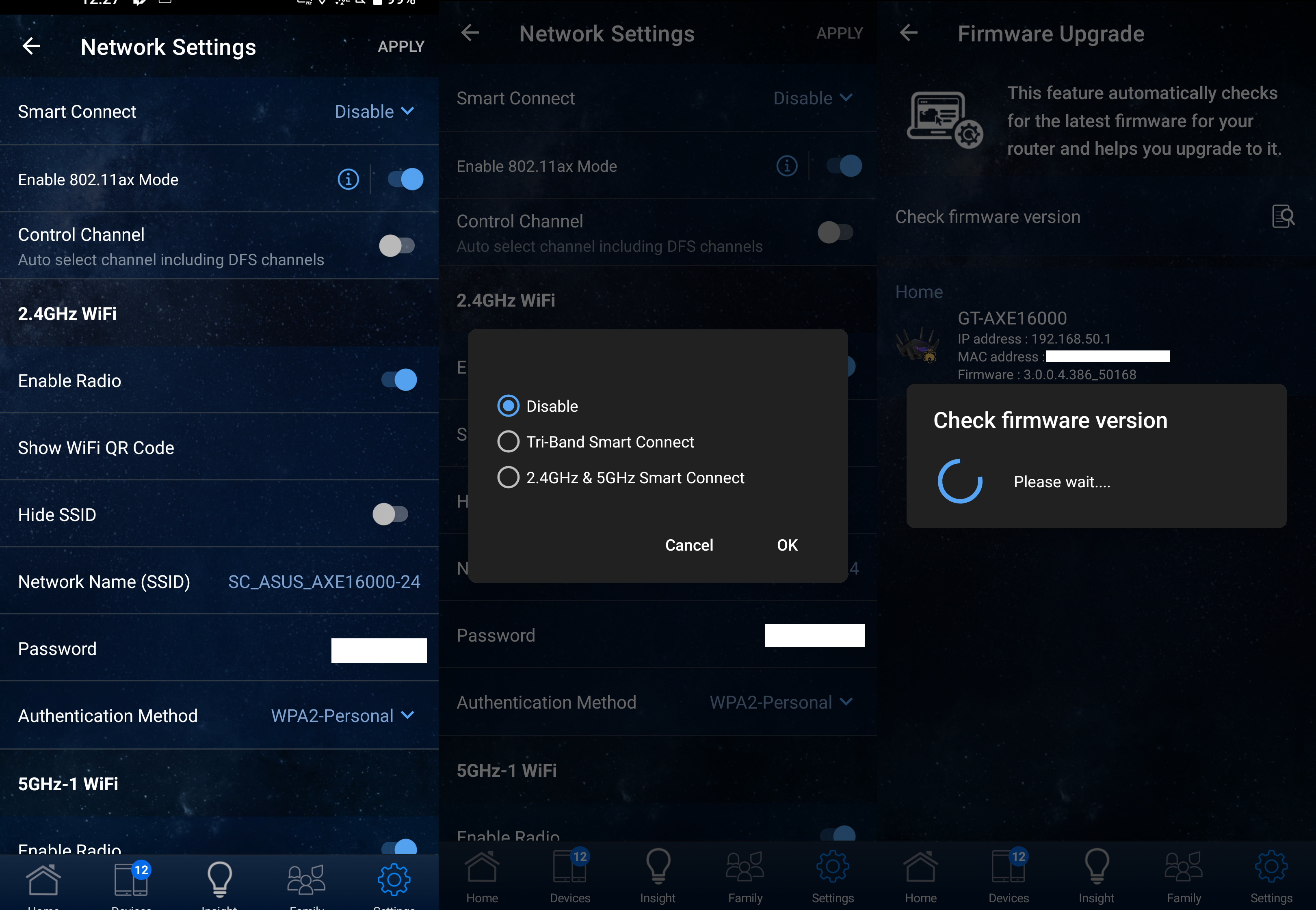
Apart from the jaw-dropping hardware, one of the ROG Rapture GT-AXE16000’s best features is the software ASUS bundles in. AiProtection to start includes extra web security, intrusion protections, and malicious site blocking. Powered by Trend Micro, AiProtection is available for free with your ASUS router. Some other brands like Netgear, TP-Link, eero, and Gryphon ask you to pay a recurring subscription for their full feature set.
AiProtection also includes a robust set of parental controls. You can create profiles for each member of your family so you can specify a specific set of rules for each. You can block sites and set up time schedules for each profile so you can restrict the web for the kids without blocking anything for the adults.
One of my favorite ASUS tricks is AiMesh. While mesh systems have gotten very popular, the mesh-in-a-box solutions from brands like Orbi, Deco, and eero all have something in common– restrictive simplicity. These brands have pulled access to the most advanced settings and some like Orbi only allow mesh expansion with a handful of approved satellites. ASUS bucks this trend and makes it look easy with AiMesh.
AiMesh allows you to create a mesh network with just about an ASUS router including ZenWiFi models like the Wi-Fi 6E model I loved in my ZenWiFi ET8 review. This expansion option lets the gamer in the family get all of the ports and optimizations they want while the rest of the family can enjoy reliable streaming and browsing on a mesh. If you are building a mesh, something with Wi-Fi 6E will work best, like the ZenWiFi ET8, though just about any ASUS router will work fine.
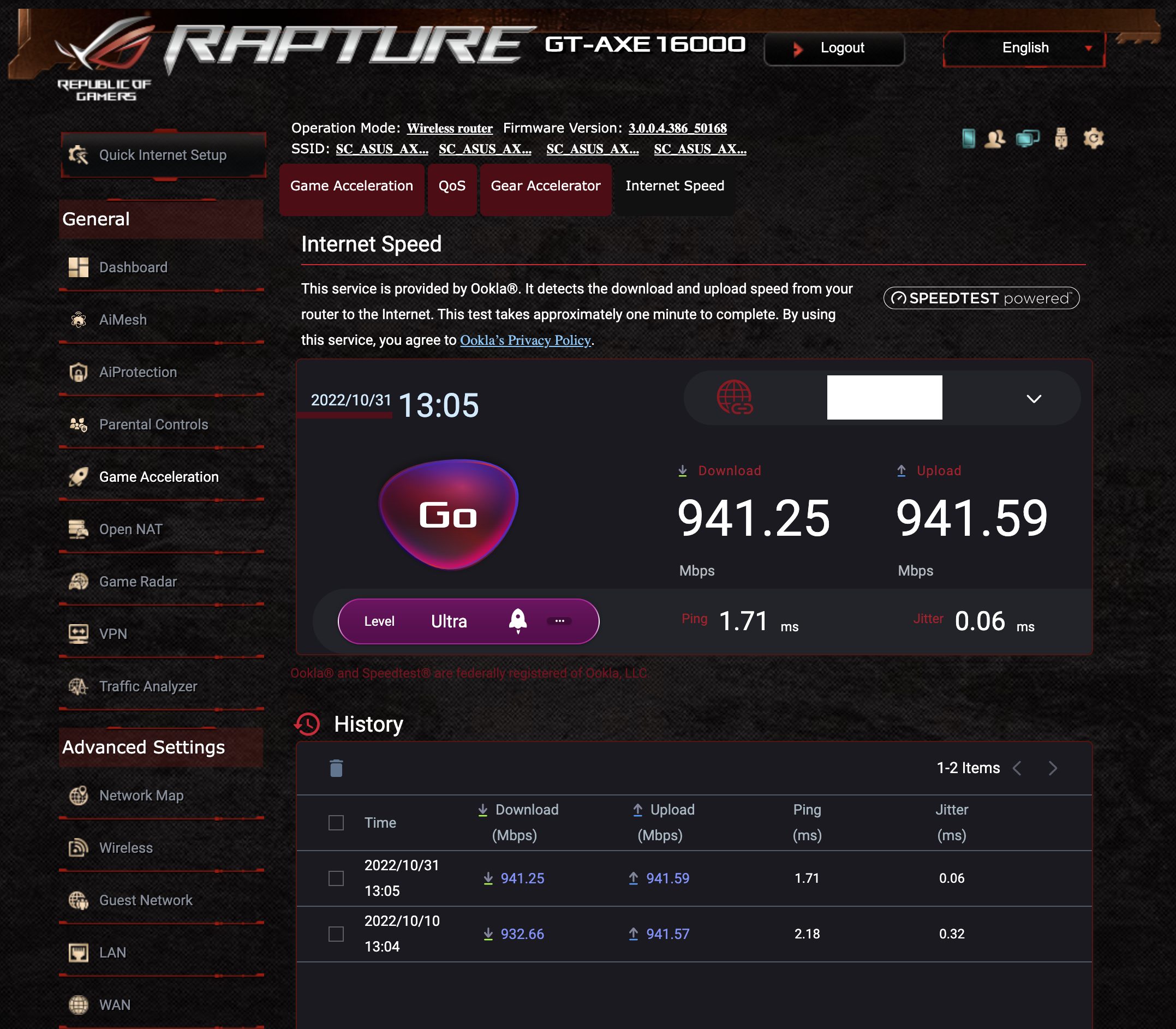
Finally, I feel like I commend ASUS on its advanced settings nearly every time I review one of its routers but it’s something I really appreciate. The ASUS Router app gives you easy access to basic settings and is perfect for less savvy users but if you connect through a web browser, there isn’t much about ASUSWRT that you can’t customize. It’s a breath of fresh air for those of us that like to fine-tune our networks.
ROG Rapture GT-AXE16000 review: What I don't like
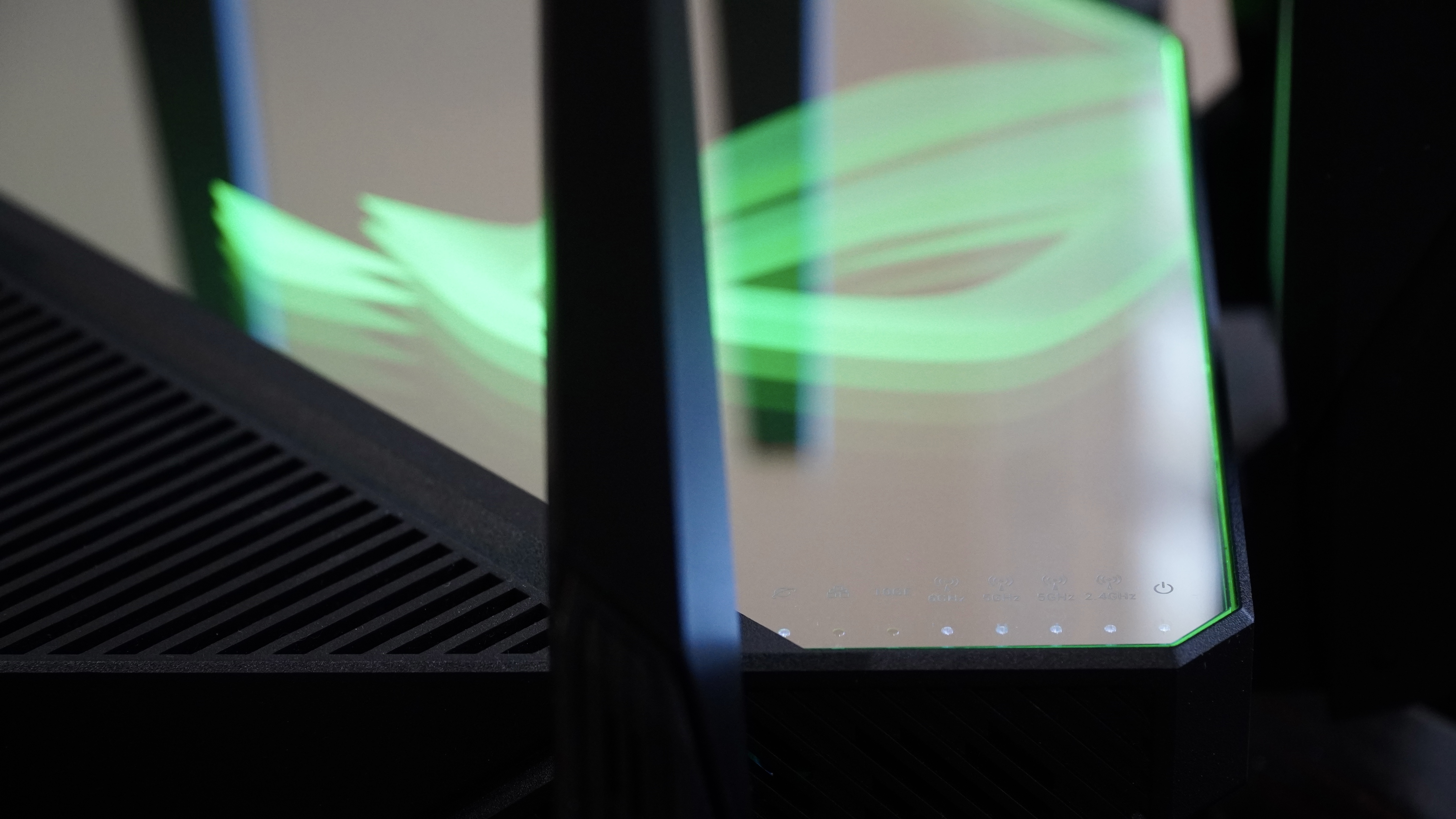
While its price tag is right in line with what you would expect from this tier of router, there’s no denying that it’s way too expensive for most people. Even if you can afford it, there’s a good chance you don’t need all of the power on offer here.
If you’re interested in this router for the 10GbE switch, there are a couple of things to watch out for. While I lack the equipment to test the 10Gbps, some users are reporting in customer reviews that in order to get the full speed, you’ll need to disable AiProtection. If you’ve got a fast NAS you’re trying to get connected to, you may have to give up some of the software features to get full access to your Ethernet speeds. At least on this software version.
Another thing I don’t love is just how huge this router is. I get it, there needs to be cooling and you need space for the eight massive antennas, but that doesn’t change the fact that you’ll be dedicating some serious space to this router. This router is like building a full tower ATX PC when most people could really do all they need on a Chromebook.
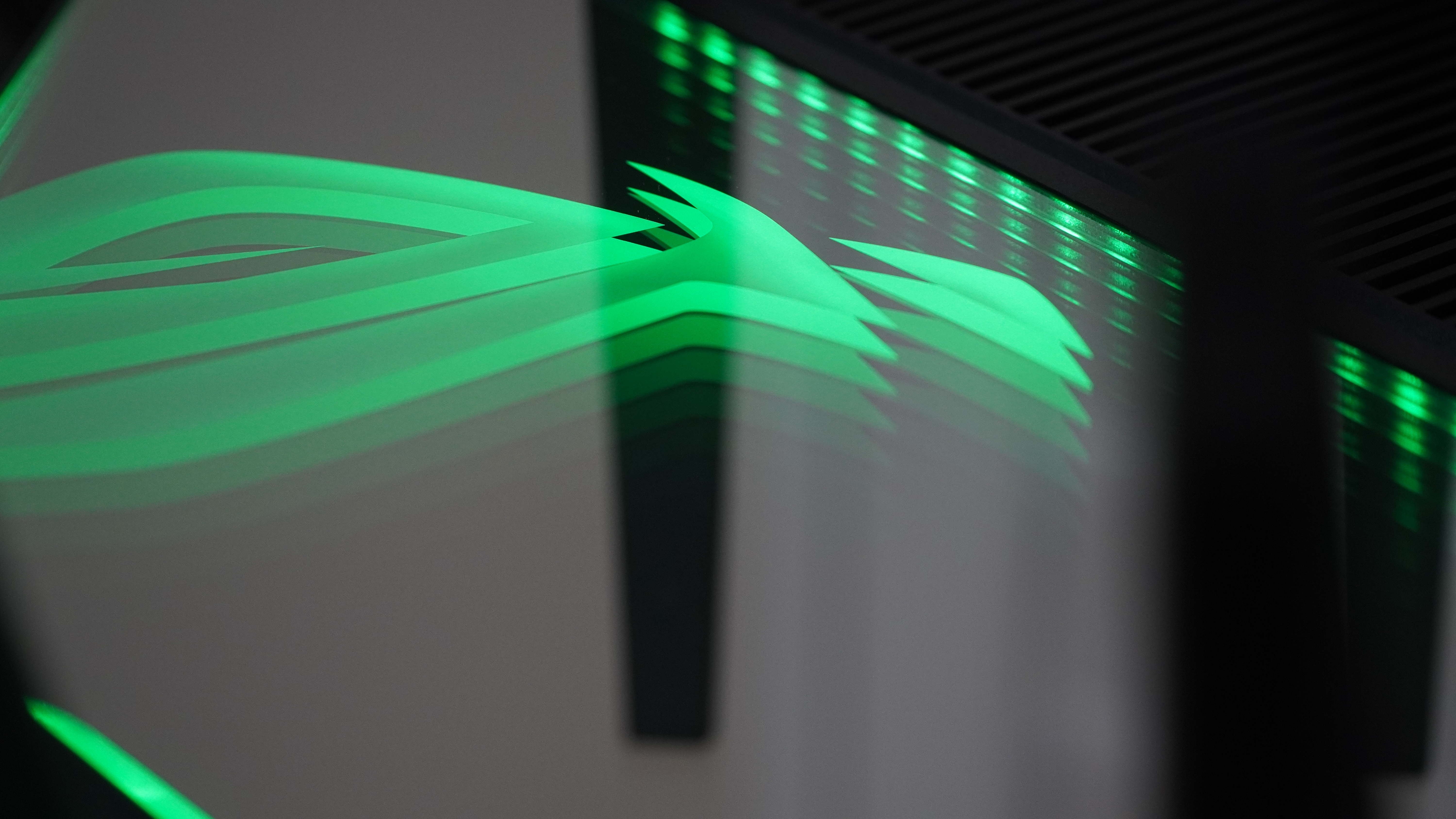
Luckily ASUS hasn’t held back on the presentation with a massive mirrored surface. In my case, the mirror is second to none when it comes to catching dust and cat hair. The embedded LED lights only help to accentuate the dust. I think it looks great with the ROG logo etched into it, but it’s something I would have to clean more than I’d like. It also doesn’t help that the RGB lighting isn’t as advanced as I’d like. The lights simply don’t change color as smoothly as I’d like to keep the router on full display.
ROG Rapture GT-AXE16000 review: The competition
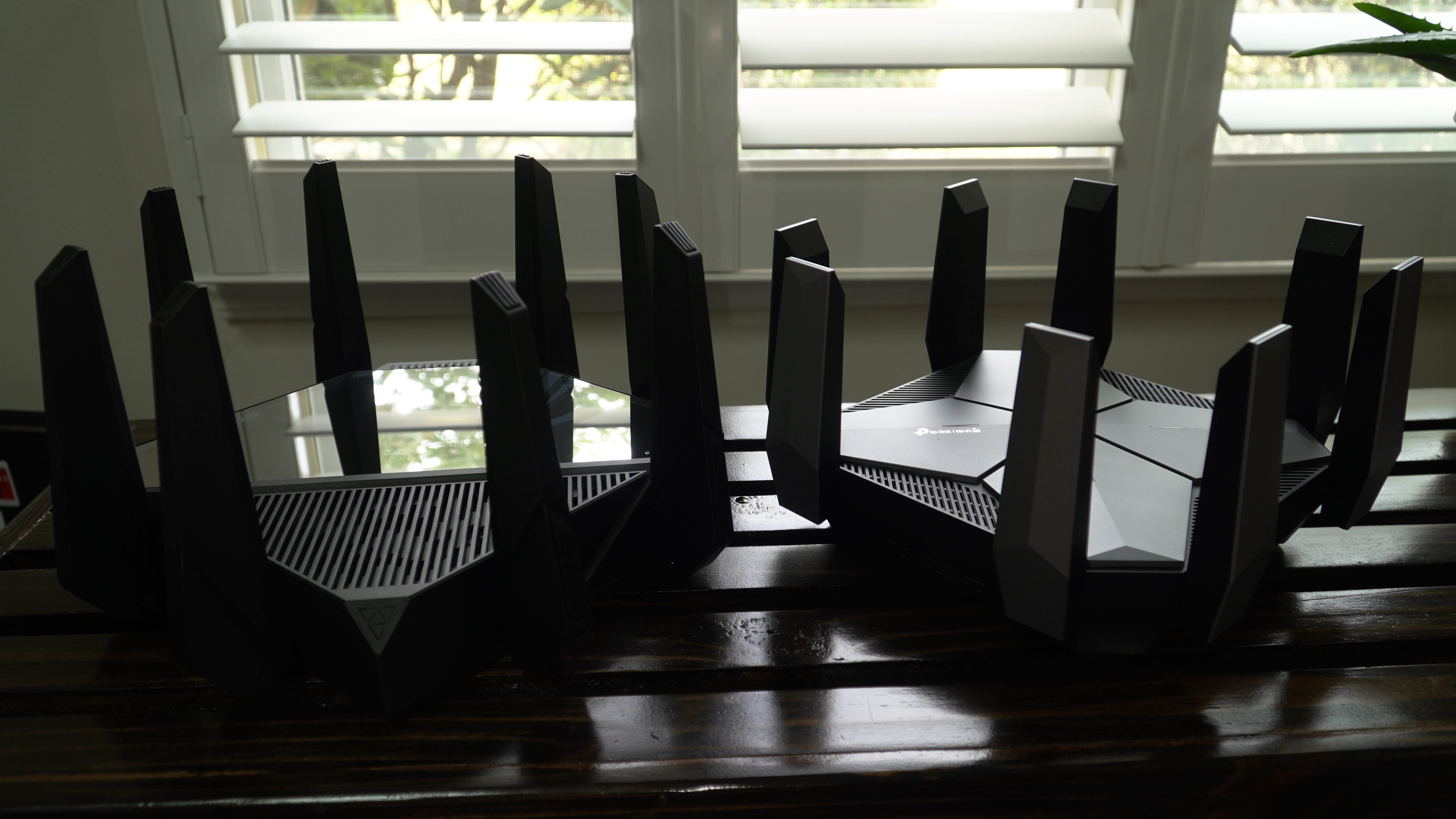
The biggest competition for the ROG Rapture GT-AXE16000 reads a lot like a list of the best Wi-Fi 6E routers. A good chunk of these routers are swapping one of their 5GHz bands for a 6GHz one which makes sense on the surface, but when you remember that most of the wireless devices we'll use for the next couple of years don't have Wi-Fi 6E, it doesn't quite make sense for enthusiasts. Quad-band routers give you the best of Wi-Fi 6 plus Wi-Fi 6E so you don't have to give up a thing when you move from one of the best Wi-Fi 6 routers to a Wi-Fi 6E model.
One of the first routers to come to mind is the Netgear Orbi RBKE963 mesh kit. This kit has the same AXE16000 connection speed as the ROG but it dedicates one of its 5GHz band entirely to the mesh connection. While it's extremely fast, my Orbi RBKE963 review found that the speeds didn't quite hold up to a gigabit connection in a congested apartment building. Even so, it has 10GbE and could be an excellent pick for someone looking for top speeds over a large estate.
TP-Link has tried its hand at quad-band Wi-Fi 6E with the TP-Link Archer AXE300 and in many ways, it's the more complete package. TP-Link has dual 10Gbps wired networking as well though one of its ports can be either gigabit or SFP+. SFP+ is a connector that can be used with a fiber connection making it a better pick for someone that already has a high-speed fiber network built out. Admittedly, this is rare but possible in a new home build if the owner wanted to be as futureproof as possible. Other than that, it also has a quad-band AXE16000 connection and comes in at $100 less.
If you want Wi-Fi 6E with all of the other ROG features intact but don't want to spend quite as much money, the ROG Rapture GT-AXE11000 is an excellent choice. It drops one of the 5GHz bands but still has plenty of capacity even for a large family. It also has RGB but with a simple light-up logo, its light show is a bit more subdued. I like the way it looks more than the bigger model but you do give up 10GbE in favor of 2.5GbE. Still, my ROG Rapture GT-AXE11000 review found it to be one of the fastest routers you can get. At least until this AXE16000 model was released.
ROG Rapture GT-AXE16000 review: Should you buy it?
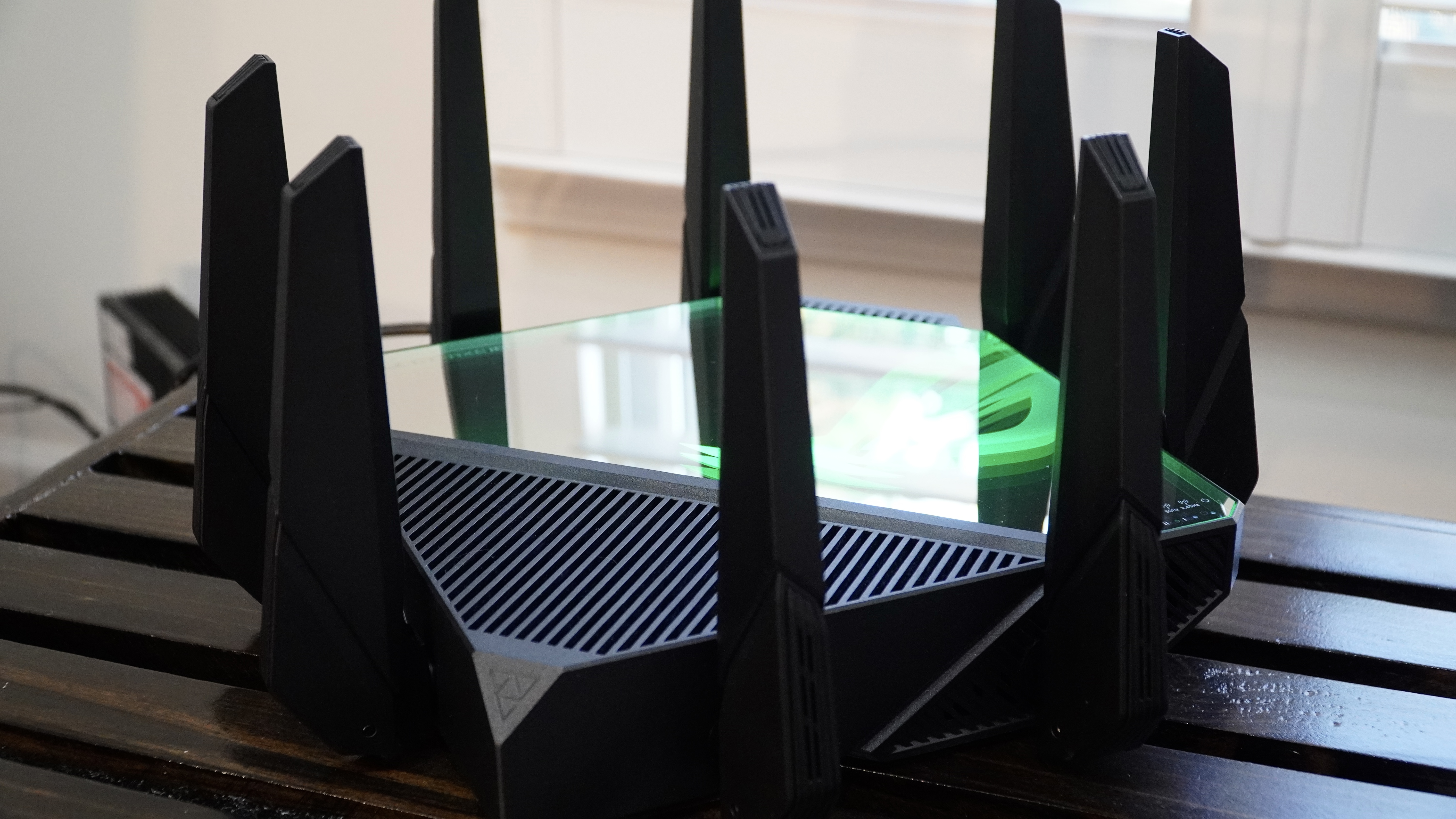
You should buy it if...
- You want the absolute fastest Wi-Fi speeds in a home router.
- You have 10Gbps networking at home.
- You have a high-speed SSD-based NAS.
- You simply want the best router money will buy.
You should skip it if...
- You don't need the speed.
- You don't have $700 burning a hole in your pocket.
- You don't have any multi-gig devices or a multi-gig internet connection.
In this review, I've done my best to capture the beauty of this router in pictures but the fact of the matter is that photographing a mirror isn't the easiest thing to get right. This router is beautiful in person and I'm again reminded of how nice the ZenWiFi Pro ET12 was to look at. I'm not saying a router needs to be pretty but when you spend so much money on something, it's nice if it looks every bit as ridiculous sitting in your home as it does on your credit card statement.
The ROG Rapture GT-AXE16000 is every bit of what ASUS promises and it has been rock solid and reliable since I hooked it up. While its light show had become a bit of a joke in my home, no one complained once about the speed or reliability of their network connection. This is in a home that has fully moved to IPTV as well. I played games like Halo Infinite online and downloaded huge 50+GB games without issue.
The ROG Rapture GT-AXE16000 from ASUS is expensive but it almost feels worth it when you tally up everything you get. When you remember there are no monthly fees to be found, plenty of advanced settings to tweak, and a simple app-based interface for those that want simplicity, the hefty price tag starts to feel a bit more reasonable.
When Samuel is not writing about networking or 5G at Android Central, he spends most of his time researching computer components and obsessing over what CPU goes into the ultimate Windows 98 computer. It's the Pentium 3.
